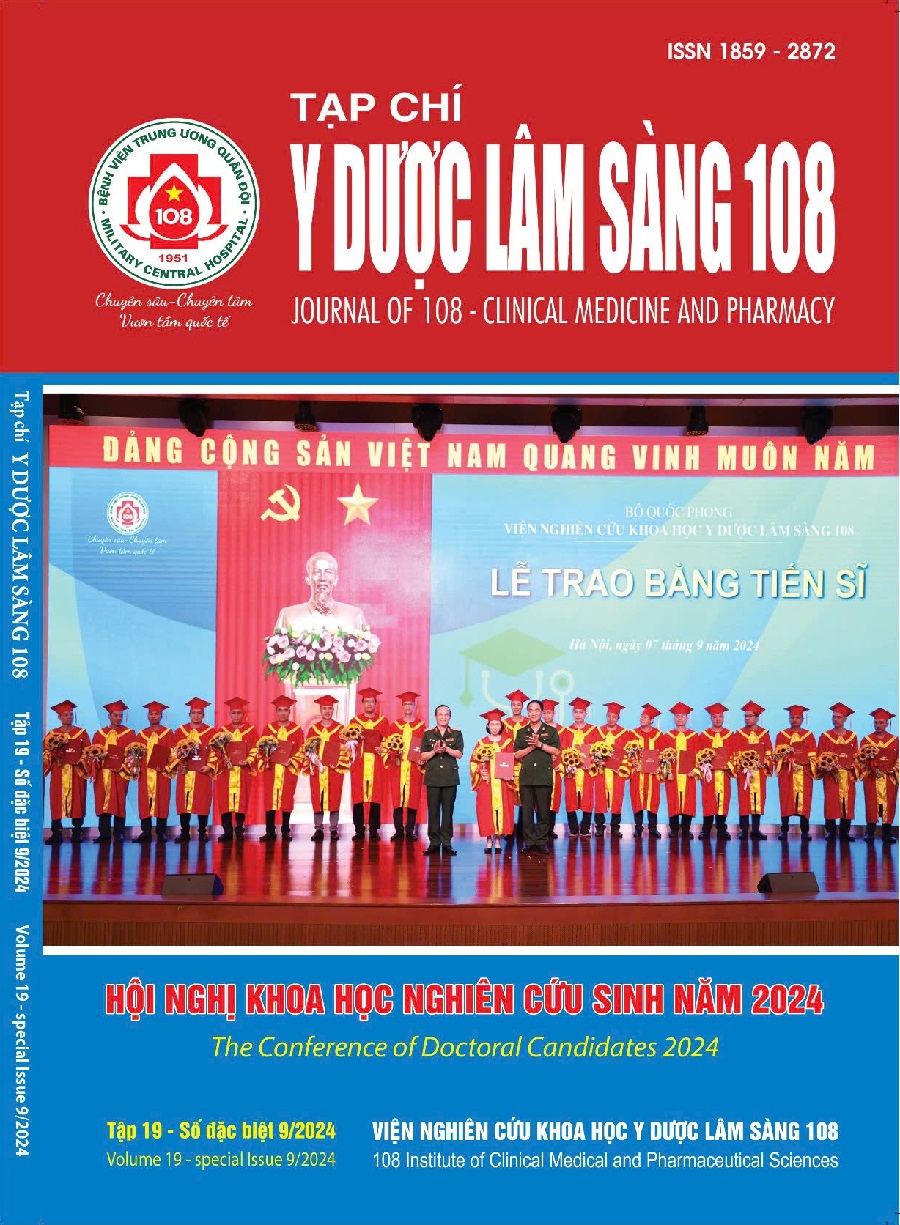Nội soi mật tụy ngược dòng ở bệnh nhân túi thừa quanh núm vater: Nhân hai trường hợp thông nhú dưới sự hỗ trợ của clip
Main Article Content
Keywords
Tóm tắt
Túi thừa quanh núm vater (periampullary diverticulum - PAD) thường xuất hiện ở người lớn tuổi, vô tình phát hiện khi can thiệp nội soi mật tuỵ ngược dòng (ERCP). PAD thường không có triệu chứng, tuy nhiên lại là yếu tố nguy cơ dẫn tới hình thành sỏi đường mật. PAD là một trong các yếu tố ảnh hưởng tới quá trình can thiệp ERCP do làm tăng thời gian thông nhú, cũng như tăng tỷ lệ thông nhú khó. Chúng tôi báo cáo hai trường hợp lâm sàng can thiệp ERCP, trong quá trình can thiệp phát hiện túi thừa quanh núm vater, núm nằm ở vị trí không thuận lợi cho quá trình thông nhú. Chúng tôi tiến hành dùng clip kẹp kéo núm ra vị trí khác và tiến hành thông nhú thuận lợi. Đây là phương án can thiệp hỗ trợ thông nhú tương đối dễ thực hiện, mang lại hiệu quả cho những trường hợp thông nhú khó do PAD.
Article Details
Các tài liệu tham khảo
2. Lobo DN, Balfour TW, Iftikhar SY (1998) Periampullary diverticula: Consequences of failed ERCP. Ann R Coll Surg Engl 80(5): 326-331.
3. Chen L, Xia L, Lu Y, Bie L, Gong B (2017) Influence of periampullary diverticulum on the occurrence of pancreaticobiliary diseases and outcomes of endoscopic retrograde cholangiopancreatography. Eur J Gastroenterol Hepatol 29(1): 105-111. doi:10.1097/MEG.0000000000000744.
4. Mohammad Alizadeh AH, Afzali ES, Shahnazi A et al (2013) ERCP features and outcome in patients with periampullary duodenal diverticulum. ISRN Gastroenterol 217261. doi:10.1155/2013/217261.
5. Tabak F, Ji GZ, Miao L (2021) Impact of periampullary diverticulum on biliary cannulation and ERCP outcomes: A single-center experience. Surg Endosc 35(11) :5953-5961. doi:10.1007/s00464-020-08080-8.
6. Hu Y, Kou DQ, Guo SB (2020) The influence of periampullary diverticula on ERCP for treatment of common bile duct stones. Sci Rep 10(1):11477. doi:10.1038/s41598-020-68471-8.
7. Inoue R, Kawakami H, Kubota Y, Ban T (2019) Endoscopic biliary intervention using traction devices for periampullary diverticulum. Intern Med 58(19): 2797-2801. doi:10.2169/internalmedicine.2804-19.
8. Boix J, Lorenzo-Zuniga V, Ananos F, Domenech E, Morillas RM, Gassull MA (2006) Impact of periampullary duodenal diverticula at endoscopic retrograde cholangiopancreatography: A proposed classification of periampullary duodenal diverticula. Surg Laparosc Endosc Percutan Tech 16(4): 208-211. doi:10.1097/00129689-200608000-00002.
9. Tyagi P, Sharma P, Sharma BC, Puri AS Periampullary diverticula and technical success of endoscopic retrograde cholangiopancreatography. Surg Endosc 23(6): 1342-1345. doi:10.1007/s00464-008-0167-7.
10. Oddo F, Chevallier P, Souci J et al (1999) Radiologic aspects of the complications of duodenal diverticula. J Radiol 80(2): 134-140.
11. Yoneyama F, Miyata K, Ohta H, Takeuchi E, Yamada T, Kobayashi Y (2004) Excision of a juxtapapillary duodenal diverticulum causing biliary obstruction: Report of three cases. J Hepatobiliary Pancreat Surg 11(1): 69-72. doi:10.1007/s00534-003-0854-7.
12. Panteris V, Vezakis A, Filippou G, Filippou D, Karamanolis D, Rizos S (2008) Influence of juxtapapillary diverticula on the success or difficulty of cannulation and complication rate. Gastrointest Endosc 68(5):903-910. doi:10.1016/j.gie.2008.03.1092.
13. Yildirgan MI, Basoglu M, Yilmaz I et al Periampullary diverticula causing pancreaticobiliary disease. Dig Dis Sci 9(11-12): 1943-1945. doi:10.1007/s10620-004-9597-9.
14. Hagege H, Berson A, Pelletier G et al (1992) Association of juxtapapillary diverticula with choledocholithiasis but not with cholecystolithiasis. Endoscopy 24(4): 248-251. doi:10.1055/s-2007-1010476.
15. Miyazaki S, Sakamoto T, Miyata M, Yamasaki Y, Yamasaki H, Kuwata K (1995) Function of the sphincter of Oddi in patients with juxtapapillary duodenal diverticula: Evaluation by intraoperative biliary manometry under a duodenal pressure load. World J Surg 19(2): 307-312. doi:10.1007/BF00308647.
16. Shinagawa N, Fukui T, Mashita K, Kitano Y, Yura J (1991) The relationship between juxtapapillary duodenal diverticula and the presence of bacteria in the bile. Jpn J Surg 21(3): 284-291. doi:10.1007/BF02470948.
17. Rajnakova A, Goh PM, Ngoi SS, Lim SG (2003) ERCP in patients with periampullary diverticulum. Hepatogastroenterology 50(51): 625-628.
18. Kennedy RH, Thompson MH (1988) Are duodenal diverticula associated with choledocholithiasis? Gut 29(7): 1003-1006. doi:10.1136/gut.29.7.1003.
19. Shi HX, Ye YQ, Zhao HW et al (2023) A new classification of periampullary diverticulum: cannulation of papilla on the inner margins of the diverticulum (Type IIa) is more challenging. BMC Gastroenterol 23(1):252. doi:10.1186/s12876-023-02862-9.
20. Todd H. Baron M, FASGE (2015) Cannulation of the Major Papilla. ERCP third editon: 108-122.
 ISSN: 1859 - 2872
ISSN: 1859 - 2872
